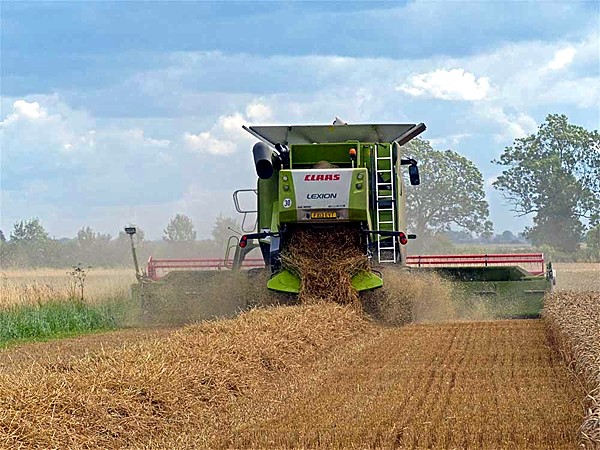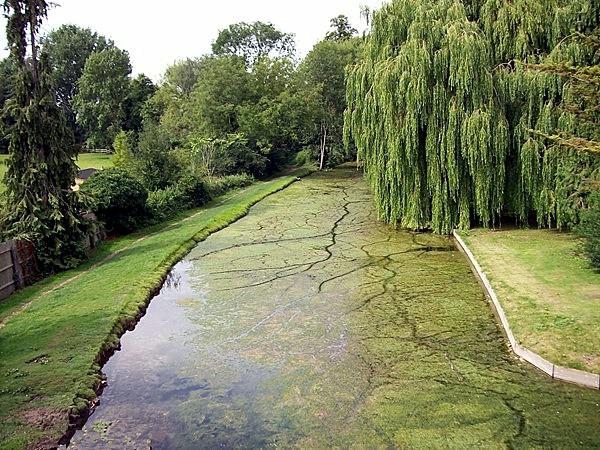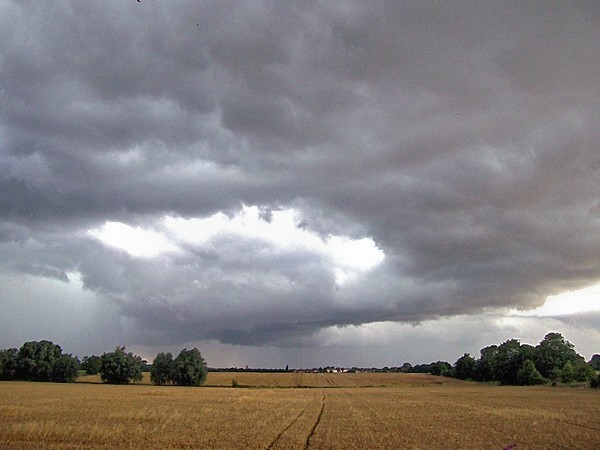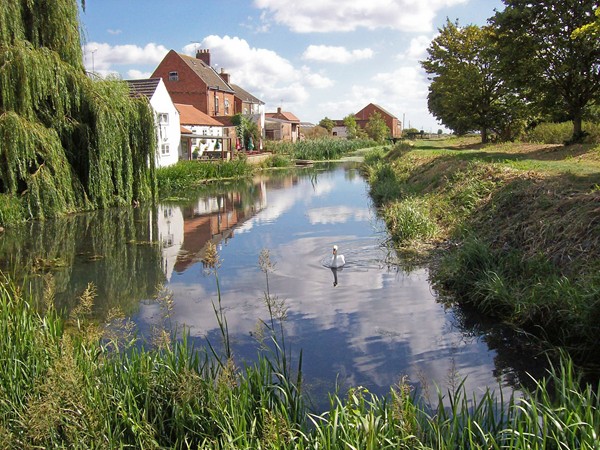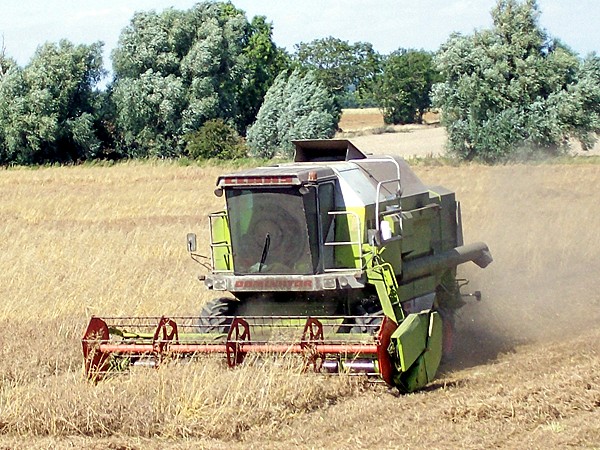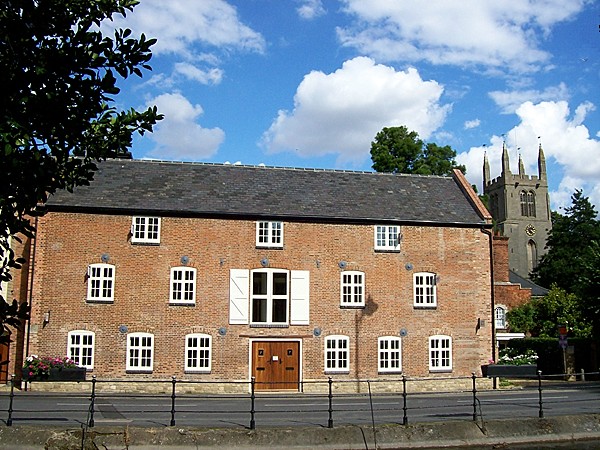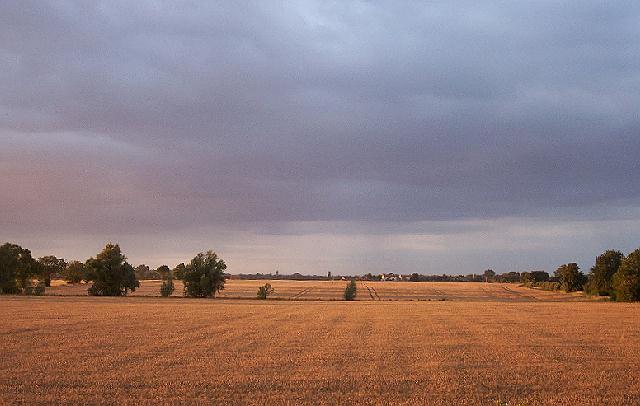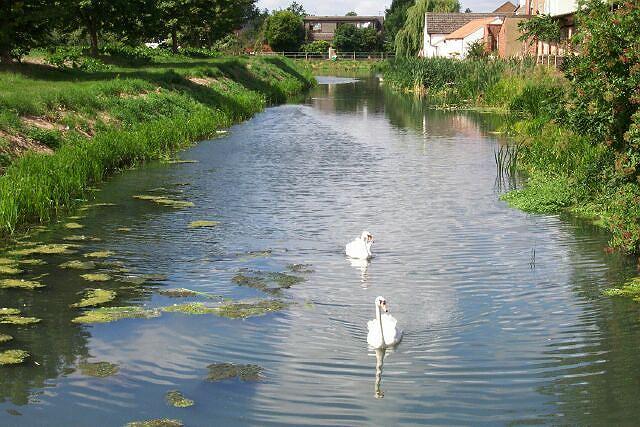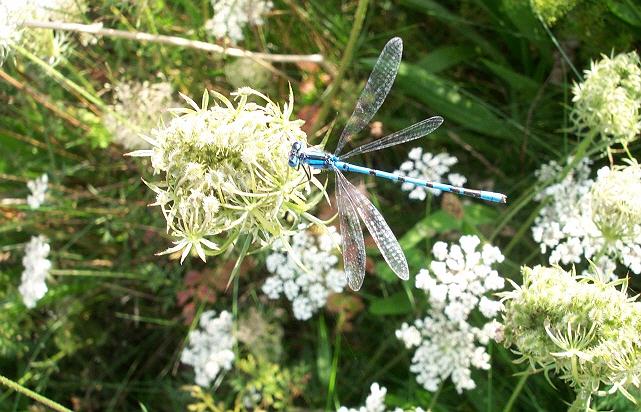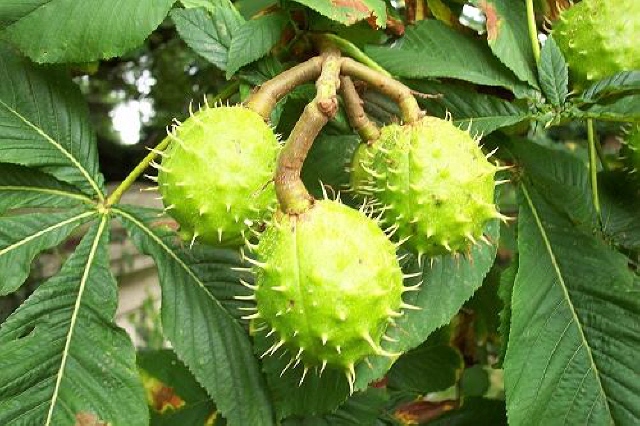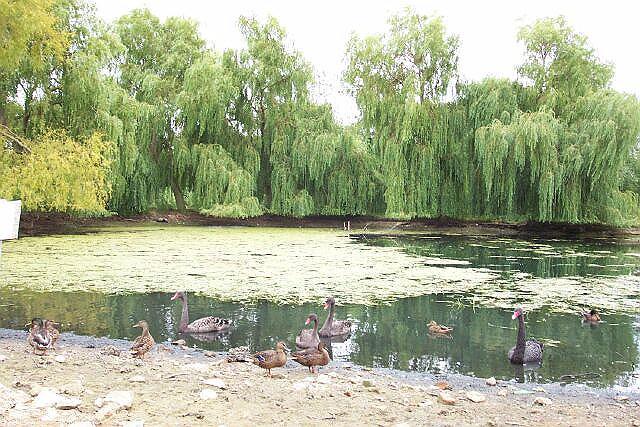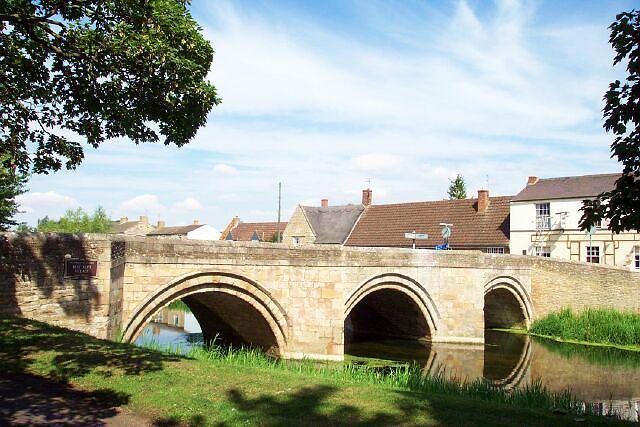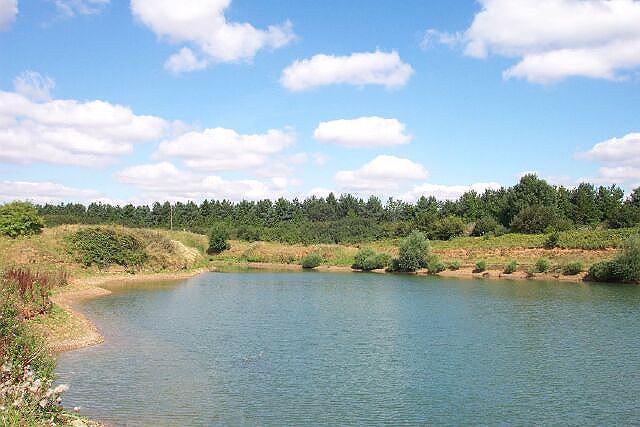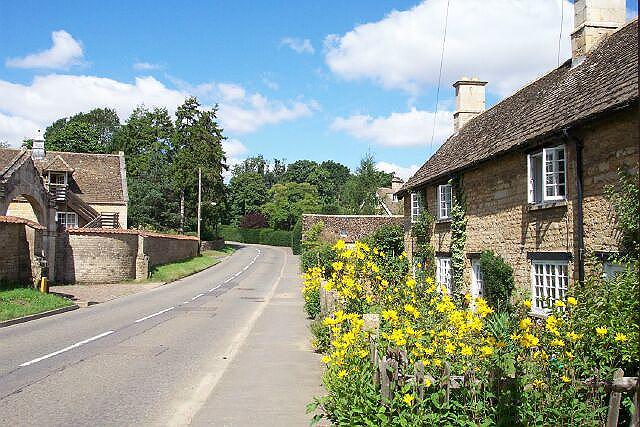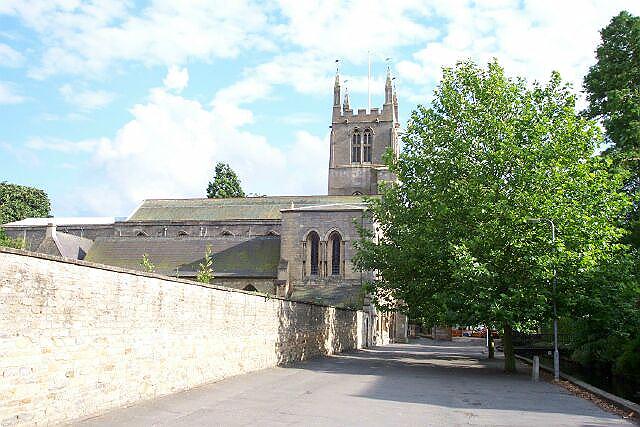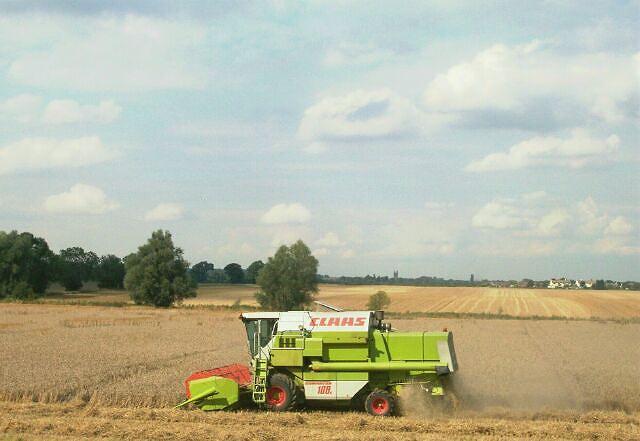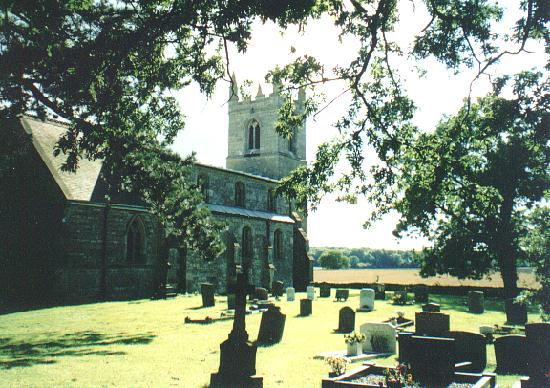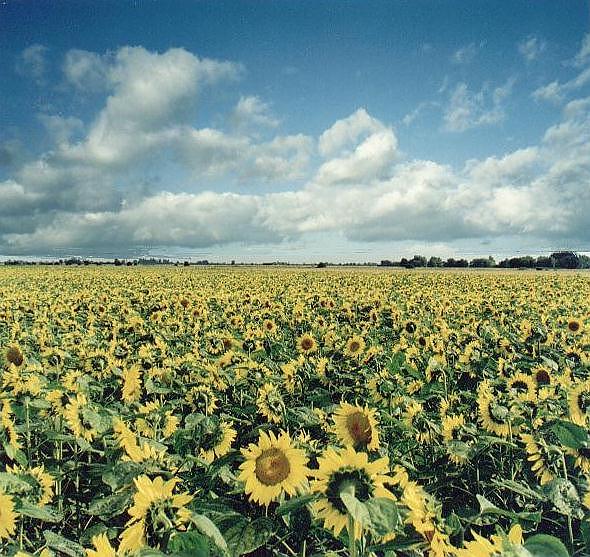|
August
Sunday 3rd August 2014: An innovation for the arrival of the judges in this year’s East Midlands in Bloom competition was a selection of four sculptures created by pupils at Bourne Academy which were put on display on the roundabout in West Road where it meets the Raymond Mays Way, the south-west relief road. Unfortunately, these unusual artistic creations did not please everyone and one of them (on the right) disappeared overnight but after a police appeal it was returned, having been found by a passing cyclist abandoned in a nearby ditch and restored to its rightful place in the display.
Monday 12th August 2013: Fluctuating weather patterns have delayed the corn harvest by a few weeks this year but the combines are out at last bringing in the crop for another year. The hum of their high-powered engines is a familiar sound in this part of the country as they cut a swathe through fields of golden wheat, eating up the acres within hours and soon field after field is reduced to stubble for another year and that too will soon be under the plough as the farming year begins again. This evocative image of summer harvesting was taken from the footpath along the Car Dyke off Mill Drove to the north of Bourne as the farmer brings in his crop while the weather is still favourable.
Thursday 8th August 2013: Weather conditions this summer have encouraged the growth of green algae in our ponds, marshes, lakes, pools, and rivers, stimulated by a combination of light, higher temperatures and the amount of nutrients in the water and spreading much faster as ducks, geese, herons, or other aquatic birds fly to new areas carrying mud on their feet in which the plant can survive until it lands in a new body of water. The result is that both St Peter's Pool and the Bourne Eau are now covered with this green slime which can be seen here on the waterway behind Baldock's Mill in South Street and although it may look attractive, the growth will take many weeks to disperse and the water to clear.
Monday 5th August 2013: The hot spell has brought us a season of storms and heavy rain, often accompanied by thunder and lightning, an astounding sight for anyone with a panoramic view of the fen such as here from my study window to the north of Bourne with Dyke village in the distance, and where I took this picture without even moving from my desk. After a sunny afternoon, the sky suddenly darkened and turned black in places before the downpour began and despite the threatening clouds which massed overhead in a constantly changing formation, no one could doubt the beauty of the skyscape.
Thursday 19th August 2010: Elsea Park presents an imposing appearance for motorists using the main A15 into Bourne from the south and the water feature at the entrance to the estate has become an attraction for wildlife where visitors can see fish and waterfowl in abundance. Over seven hundred houses have already been built on the 300-acre farmland site during the past decade making it the biggest single residential development in our history and once the target of 2,000 has been reached, the population will have been increased by well over one third.
Wednesday 11th August 2010: One of the town's most neglected features is the Bourne Eau, particularly the stretch which runs alongside Eastgate, once navigable and home to shoals of fish but now so poorly maintained that it has become silted up and choked with weeds. During the 19th century there were pleasure boats on the water and the banks thronged with Sunday afternoon walkers but the area is no longer attractive although the situation might change as developers seek new sites to build more homes and perhaps in the next decade the area could be transformed by blocks of riverside flats.
Wednesday 19th August 2009: The effect of the urban sprawl is best seen in summer when machines needed to bring in the harvest trundle through the streets to outlying fields whose edges are lined with new houses. On the northern outskirts of Bourne, only two fields remain between the town and Dyke village and the forecast is that they too may be swallowed up before long by hungry developers which would rob me of the view from my study window, here showing fifty acres of dried peas being combined by one of the powerful monsters that keep our agricultural industry going.
Thursday 21st August 2008: The appearance of South Street has been dramatically changed by the development of the old red brick grain warehouse, built 200 years ago when the corn trade flourished and which has recently been given a new lease of life as retirement flats for old people. The building stands in the shadow of the Abbey Church and overlooking the War Memorial Gardens with the Bourne Eau flowing past, a peaceful scene from one of the seats in the park from where I took this picture, even on a busy afternoon as traffic begins to pile up for the homeward trek by those who work outside the town.
Wednesday 20th August 2008: Voluntary effort has been mainly responsible for providing this town with its floral displays during the summer months and the tubs appear in the streets year after year to provide pleasure for many and perhaps win a coveted award in the East Midlands in Bloom competition which is currently being judged for 2008. Here in South Street, the iron palisade railings erected alongside the river in 1869 provide a convenient support for planters filled with seasonal flowers as a welcome to Bourne for visitors and for everyone who enters this town on the main A15 from the south.
Thursday 14th August 2008: Heavy rain in recent days has delayed the corn harvest again, as it has in previous summers, and the fields hereabouts, such as this one between Bourne and Dyke village which I can see from my study window, are still full of standing wheat and barley whereas at this time of the year they should be covered with straw bales and stubble. This is not so much a matter of climate change as our usual erratic weather pattern and it was ever thus, even in the earliest times, but as before, within days we will hear the hum of the combine as the crop is safely gathered in yet again, the harvest acting as a marker for the farming year which continues much the same whatever the weather.
Wednesday 10th August 2005: The corn harvest is late again this year because of recent heavy rain and so we have two fields of wheat awaiting the combines between our house on the outskirts of Bourne and Dyke village, a mile or so away across the fen. From my study window, I can see the changing seasons in all their glory, each with its own colours, and despite the inclement weather, there have been sunny spells. This evening, after a very warm day, there was a beautiful sky shortly before sunset and the last rays of the setting sun suddenly touched the landscape and turned the fields a golden brown. Such scenes are fleeting but I managed to get a shot just in time.
Wednesday 3rd August 2005: The Bourne Eau is a neglected river, infrequently maintained and overgrown in many places, yet still an attraction for wildlife, particularly mute swans that have their home on the waterway. This pair has been here for many years and can be seen most days on this stretch behind Eastgate. If you stand on the bridge at Mays Sluice in Cherryholt Road from where I took this picture, and look upstream towards Bedehouse Bank, you may imagine what the river was like in past times, bringing cargo boats up to the wharves with consignments of coal and other commodities and leaving loaded with hides and corn. At weekends, rowing boats could be seen on the water with courting couples and on special festive occasions there were evening trips up and down the river in lighted gondolas. What an asset we have yet there appears to be little will to realise its potential.
Saturday 28th August 2004: The harvest has been delayed for several weeks of bad weather, a wet July followed by an even wetter August, but it resumed today after a 48-hour dry spell and the race is now on to gather in thousands of acres of wheat and barley before the rain starts again. Farmers reckon that this is the most disastrous year since the devastating foot and mouth outbreak of 2001 and losses in their corn crops of around £100 an acre will put many out of business. We found this combine hard at work in the field alongside Meadow Drove, Bourne, just a short distance from the new housing estates and as we drove out into the fen, there were similar scenes in many of the cornfields. The situation is so desperate that the National Farmers' Union is examining ways to help those who are hardest hit, probably by bringing forward European subsidy payments that are not usually due until November while in Suffolk, churches were offering prayers for those farmers whose crops have been decimated by the heavy rain.
Saturday 14th August 2004: There was a time when the summer months were graced with the breathtaking beauty of dragonflies on the wing, in the countryside and in the garden, but their numbers have been decimated by intensive farming, together with many other species of insect and butterfly, and are now a rare sight. Damselflies, their smaller relations, can still be seen but only in those areas that are made welcome for them such as the private nature reserve at Baston Fen, five miles south of Bourne, where I took this photograph. This is a common blue damselfly that I found on a patch of wild carrot on the edge of a lake because they prefer a habitat with slow moving water and plenty of vegetation, and on a hot August afternoon, there must have been two or three dozen of them enjoying the final stages of their life cycle because within a month, all will have died.
Sunday 1st August 2004: The ancient and stately horse chestnut trees in the churchyard at Bourne are loaded with their ripening fruit which reminded me that conkers were one of the autumnal delights of my boyhood, threading them on to leather boot laces or a piece of string and holding contests between ourselves, three swipes each until one or the other is shattered, and the winner became the champion or conquering hero. The horse chestnut (Aesculus hippocastanum) is a fast growing and impressive tree, widely planted for ornament and shade and it often reaches a height of 100 feet. The branches of those in the churchyard are full of fruit at the moment, green, globular, spiky shells that will fall and split when ripe to reveal their contents, usually between one and three shiny conkers. They are collected as a fodder for cattle in Eastern Europe but here in England they have little use and are left for the lads to retrieve them from among the fallen leaves or pelt them off the branches with well-aimed sticks and stones to play their seasonal game.
Friday 22nd August 2003: The long dry spell of recent weeks has taken its toll on St Peter's Pool where the level has dropped dramatically as water extraction from the underground springs that supply this lake have been tapped without respite by Anglian Water for use in other towns and villages. This is an annual problem that will not be solved despite repeated complaints from the people of Bourne and the result is that the appearance of this ancient pool which has its origins in antiquity once again suffers while the ducks and swans that live here look around helplessly for the wide expanse they normally enjoy. The added problem with such a low water level is that it reveals the debris that has been thrown in and sunk to the bottom, attracting even more discarded rubbish from visitors, and so this once attractive spot has become an eyesore.
Saturday 16th August 2003: We have discovered a new nature reserve a short distance from Bourne and it is sheer delight. It is a disused sand extraction site on the outskirts of Witham-on-the-Hill called Stanton's Pit, named after the man who gave it to the Lincolnshire Wildlife Trust in 1996. Since then, much work has been done on making it suitable for visitors and on this hot mid-summer afternoon, we had the place to ourselves because it is still comparatively unknown. The reserve covers almost 20 acres and more than 50 species of birds have already been recorded and there is some evidence to suggest that the lake lies on the migratory route from the Wash inland towards Rutland Water. Among the breeding birds are little grebe, ringed plover, sand martin, turtle dove and lesser whitethroat while autumn migrant waders include the little stint, ruff, spotted redshank and wood sandpipers. During our visit, one of the sandy shores was filled with Canada geese which took to the water and we sat and watched them as they floated past like a fleet of ships, Find this place and see for yourself.
Wednesday 13th August 2003: The most beautiful and well-kept of our local villages must be Witham-on-the-Hill, a cluster of stone cottages on the slopes of the rising land, four miles south west of Bourne. This village is mentioned in the Domesday Book, the great land survey ordered by William the Conqueror in 1086, although there has been a settlement here since the Iron Age and most probably before that. The main road through the village is known as the Bytham Road because it leads to Little Bytham, and the cottages you will find along here were built around 1790 for workers on the estate of George William Johnson, who then lived at Witham Hall opposite, a grand house now used as a private school. Most of the cottage gardens are redolent of our English countryside, with vegetables at the back and flowers in the front, and this mass of golden marguerites catches many admiring glances from passing motorists.
Sunday 3rd August 2003: This is the Abbey Church in Bourne photographed from Church Walk on a sunny summer's evening when the full glory of this ancient stonework is revealed. It is difficult to believe that this was once the main road through the town, carrying stagecoaches and other horse-drawn vehicles between Peterborough and Lincoln before South Street was built to divert traffic away from the imposing west front of the 12th century church. The Bourne Eau runs alongside on the right, before being piped underground on its eastwards journey out into the fens, and the river has been a hazard for the unwary because there is no protecting rail. In July 1890, the choir of Lincoln Cathedral stopped here for a break while journeying for an engagement at Grimsthorpe Castle and they were accompanied by the cathedral precentor who decided to pass on to the boys some of his knowledge about the history of the west front and the tower but his lecture came to an abrupt halt when, overcome by his enthusiasm for the subject, he stepped backwards to secure a better view and fell into the river. Happily the water was shallow and he got out easily but the boys unanimously decided that it was by far the best part of their outing.
Thursday 22nd August 2002: Few people can have such a grandstand view of the corn harvest in Lincolnshire as that from my first floor study window from where I took this picture on Thursday afternoon. The fields between the northern outskirts of Bourne and Dyke village have been devoted to wheat this year and although heavy rain has delayed reaping for several days, overall weather conditions have been perfect and produced a bumper yield. The field which you can see being cut covers about sixty acres and the massive combine finished the job non-stop in less than a day as tractor driven trucks ran a shuttle service of grain to and from the farm. The corn harvest acts as a marker for the farming year and within days, the surplus straw will have been collected and baled and the land will again be under the plough as it is prepared for another crop in the unending cycle of food production.
Sunday 5th August 2001: The yew tree shade of an English churchyard is the perfect place to be on a hot summer's day and so it was at Kirkby Underwood, five miles north of Bourne, during our recent heat wave. There are added delights in this place because the headstones in the graveyard provide a brief glimpse of those who have gone before and it was such a place as this, at Stoke Poges in Buckinghamshire, that inspired Thomas Gray in 1750 to compose his Elegy Written in a Country Churchyard, a place where "each in his narrow cell for ever laid, the rude forefathers of the hamlet sleep". What better way to honour our ancestors than to sit in a cool spot and contemplate their lives for they were the forerunners of the society we know today.
Sunday 12th August 2001: Sunflowers are becoming a familiar sight in South Lincolnshire as farmers diversify to avoid economic hardship and here at Baston Fen, three miles south of Bourne, one landowner has devoted almost 80 acres to them. This spectacular sea of yellow blooms is a summertime delight for those that drive past this way and once they are harvested, the flowers will provide a black wild bird seed to which finches are particularly attracted and so will end up on the bird tables and in the feeders of many back gardens throughout the county. I managed to get this shot from the field's edge by using a step ladder that increased my elevation by more than three feet and although this involved a precarious balancing act on an uneven surface for almost ten minutes waiting for the sun to appear from behind a cloud, the risk was well worthwhile.
Go to: Main Index Villages Index |
